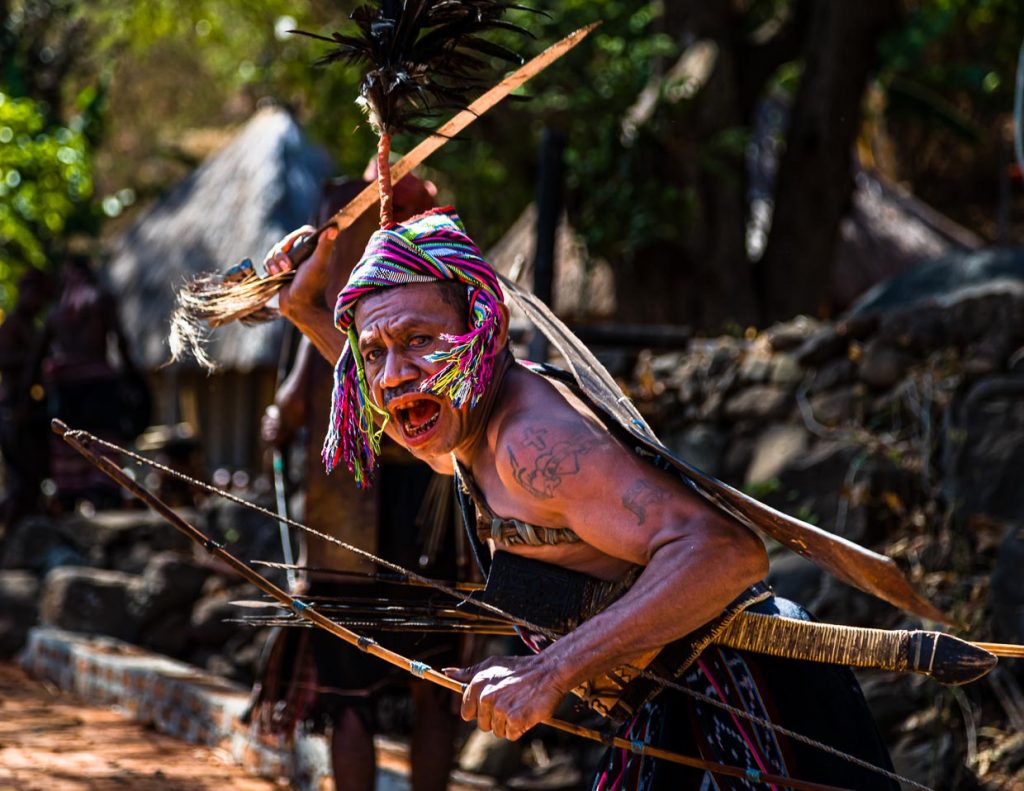According to the United Nations, around 370 million people worldwide belong to indigenous population groups. There are around 5,000 different cultures in about 90 countries around the world. They are increasingly threatened by the ongoing destruction of their habitat, the consequences of climate change and the lack of recognition of their rights. Every year on August 9, the UN Day of Indigenous Populations draws attention to their situation. Before the Covid-19 pandemic began, we were able to visit some of these cultures and gain insight into their rituals and way of life. We visited the Mende people in Sierra Leone, were able to learn about dance and body decoration of the inhabitants of the Trobiand Islands in the South Pacific, participated in a wedding ceremony on the Indonesian island of Flores, and visited a significant Aboriginal site in the Northern Territory in Australia.

Stewards of biodiversity
The insight into the culture and way of life of indigenous peoples is a deeply impressive experience. Their primitive life, their closeness to nature and their very conscious use of the resources of their homeland can teach us people of industrial societies a lot. Over centuries, indigenous peoples around the world have developed outstanding methods of living in harmony with nature. They see themselves as stewards of biodiversity, and in many parts of the world they produced what are now staple foods, such as the potato or the cassava root.


On the road in the Pacific Ring of Fire
The land area of Indonesia is made up of more than 17,000 islands, where 500 ethnic groups live and where 250 other languages are spoken in addition to the national language Bahasa Indonesia. The Sunda Islands are predominantly Christian in the majority Muslim state. On the small island of Rinca, because of the Komodo dragons, which are also dangerous for humans, one is only allowed to move around in the company of a local guide. On the island of Alor we get to know the special pile dwellings. The houses consist of four floors, protect the villagers in the rainy season and are constructed in such a way that year-round food storage is possible.

Polynesia – home of the best sailors
Understanding and knowledge of the peculiarities of nature are nowhere more pronounced than among indigenous peoples. Their hunting and fishing techniques, their sense of coordination and their navigational skills are often outstanding. In Papua New Guinea we get to know the traditional Prau boats. Until recently, these sailboats could rival the fastest high-tech boats in the Americas Cup. The reason is believed to be the special aerodynamics of the triangular delta sail, also called crab scissors sail. It is hard to believe that this technology was invented in Polynesia 10,000 years ago.

The rock paintings of Long Tom Dreaming – Australia
Oral tradition, the passing on of stories in the form of narratives, has great importance in indigenous peoples all over the world. The rock paintings in the outback of the Northern Territory in Australia still serve as a support for the oral tradition for the Aborigines today. During a visit to the caves of Long Tom Dreaming we learn about ancient stories and feel first hand how oral tradition works.


